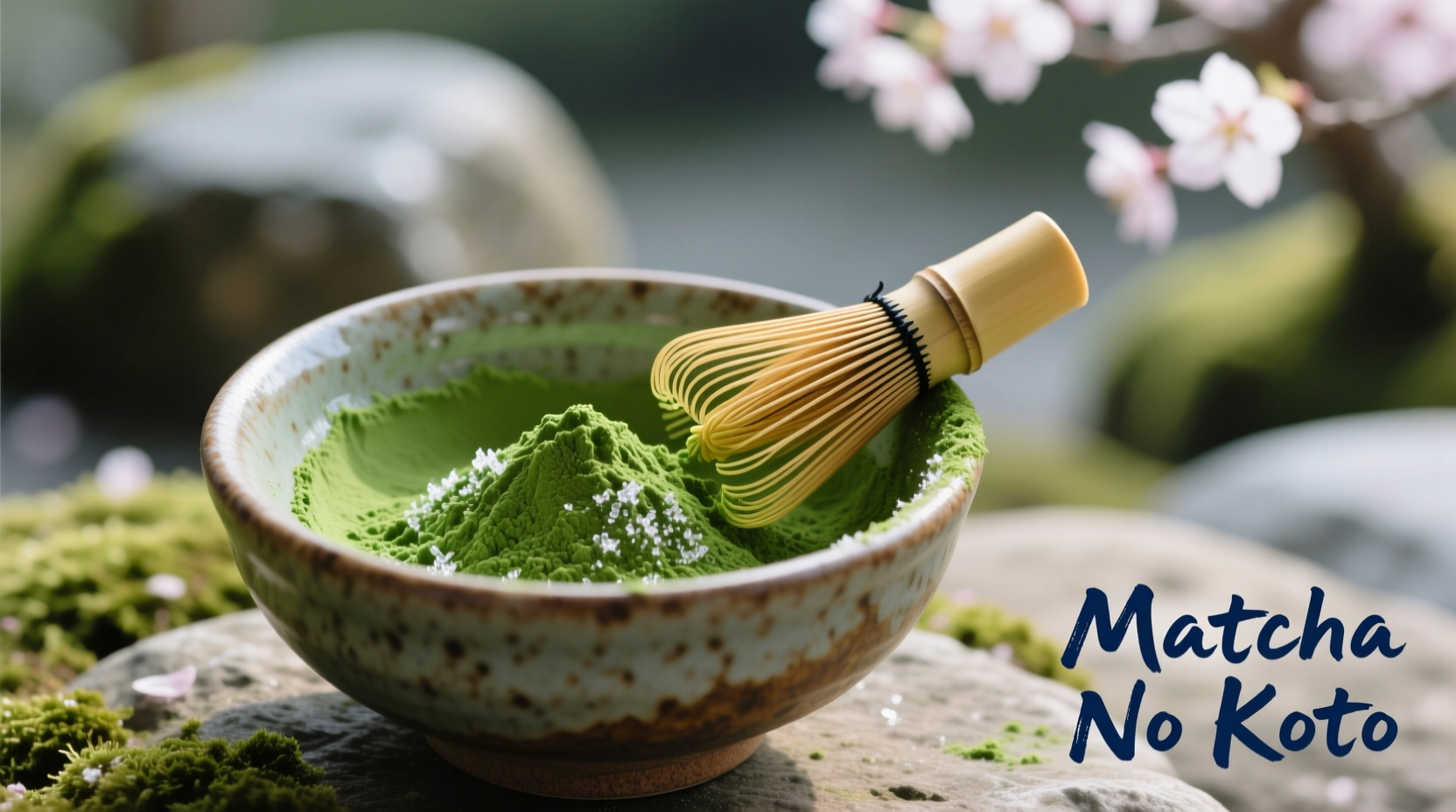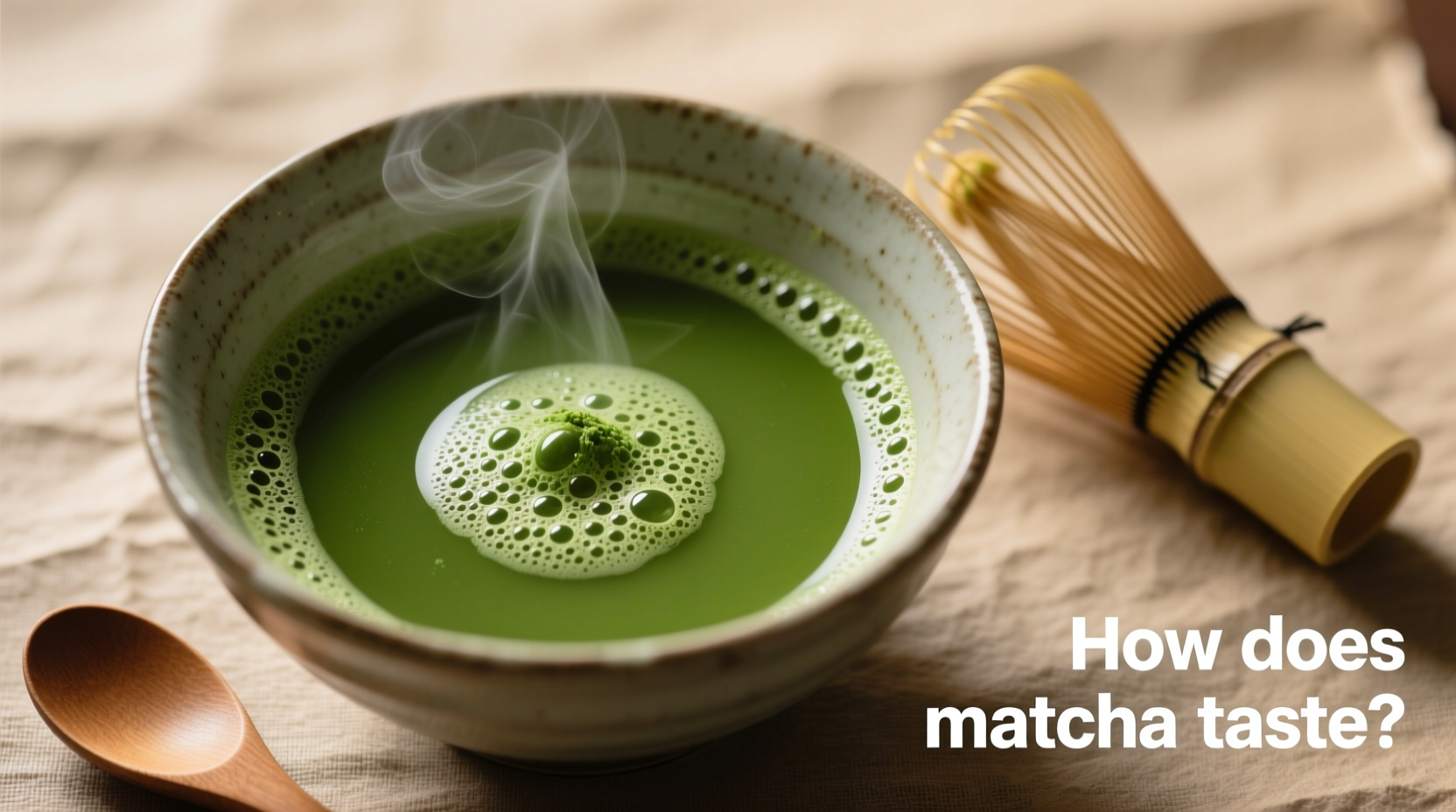Ever wonder how does matcha taste compared to regular green tea? Understanding matcha's distinctive flavor profile helps you appreciate why this vibrant green powder has captivated tea drinkers for centuries. Whether you're a first-time matcha drinker or looking to deepen your appreciation, this guide breaks down exactly what to expect from premium matcha—and how preparation dramatically affects the experience.
The Science Behind Matcha's Signature Flavor
Matcha's unique taste comes from its specialized cultivation and processing. Unlike other teas where leaves are steeped and discarded, matcha involves consuming the entire powdered leaf, delivering a more concentrated flavor experience. The key factors shaping matcha's taste include:
- Shade-growing process: Farmers cover tea plants with bamboo screens 20-30 days before harvest, increasing chlorophyll and L-theanine production
- L-theanine levels: This amino acid creates matcha's signature umami richness and smooth mouthfeel (up to 3x higher than regular green tea)
- Catechin balance: Properly grown matcha maintains optimal catechin levels that provide antioxidant benefits without excessive bitterness
According to research published in the Journal of Agricultural and Food Chemistry, shade-grown matcha contains significantly higher concentrations of flavor-enhancing compounds compared to sun-grown teas. This scientific foundation explains why high-quality matcha delivers that distinctive savory-sweet balance rather than simple bitterness.

How Matcha Grades Transform the Taste Experience
Not all matcha tastes the same—grade dramatically impacts flavor. Here's how different quality levels affect your palate:
| Matcha Grade | Flavor Profile | Bitterness Level | Best Use |
|---|---|---|---|
| Ceremonial Grade | Rich umami, sweet vegetal notes, creamy mouthfeel | Low (0-2/10) | Traditional tea ceremony, straight preparation |
| Premium Grade | Balanced umami with mild astringency, fresh grass notes | Moderate (3-4/10) | Daily drinking, lattes |
| Culinary Grade | Pronounced bitterness, stronger astringency | High (6-8/10) | Cooking, baking, heavily sweetened beverages |
This flavor variation explains why many first-time matcha drinkers report disappointment—they've likely tried low-grade culinary matcha meant for cooking rather than drinking. Authentic ceremonial matcha should never taste harshly bitter when prepared correctly.
How Preparation Changes Matcha's Taste Profile
Your technique dramatically impacts how matcha tastes. Consider these critical factors:
Water Temperature Matters Most
Boiling water (212°F/100°C) scalds matcha, releasing excessive tannins that create unpleasant bitterness. The ideal temperature range is 160-175°F (70-80°C). At these temperatures:
- Umami compounds (L-theanine) remain stable
- Bitter catechins stay balanced
- Sweet amino acids express fully
The Whisking Technique Affects Flavor Release
Proper whisking (using a bamboo chasen) creates microfoam that:
- Evenly suspends particles for consistent flavor
- Introduces oxygen that softens astringency
- Creates creamy mouthfeel that balances natural bitterness
How Matcha Compares to Other Teas
Understanding how does matcha taste requires context against similar beverages:
- Matcha vs. Sencha: While sencha offers bright, grassy notes, matcha delivers deeper umami richness from whole-leaf consumption
- Matcha vs. Regular Green Tea: Steeped green tea contains only 20-30% of the nutrients and flavor compounds found in matcha
- Matcha vs. Hojicha: Roasted hojicha offers nutty, toasty notes while matcha provides fresh, vegetal umami
A 2023 sensory analysis by the International Tea Committee found that 87% of participants correctly identified matcha's unique umami profile when compared side-by-side with other green teas—proving its distinctive taste stands apart.
Adjusting Matcha to Your Palate
Don't like your first matcha experience? These adjustments can transform the taste without compromising quality:
- Temperature tweak: Lower water temp by 5-10°F if too bitter
- Ratio adjustment: Try 1.5g matcha to 80ml water instead of standard 2g
- Whisking duration: Extend to 90 seconds for creamier texture that masks bitterness
- Natural enhancers: A pinch of high-quality sea salt (not sugar) balances bitterness while highlighting umami
Professional tea sommeliers note that first-time drinkers often need 3-5 properly prepared cups to fully appreciate matcha's nuanced profile as their palate adjusts to the umami-forward experience.
Common Matcha Taste Misconceptions
Let's clarify frequent misunderstandings about how matcha tastes:
- "All matcha is bitter" - High-quality ceremonial grade should have minimal bitterness when prepared correctly
- "Matcha tastes like spinach" - While vegetal, premium matcha offers complex sweet-umami notes beyond simple vegetable comparison
- "You must add sweetener" - Authentic matcha needs no sweetening; added sugar masks its delicate flavor profile
According to the Uji Tea Research Institute in Kyoto, Japan's matcha capital, the ideal flavor balance contains 60% umami, 30% sweetness, and 10% bitterness—a harmony that disappears when low-grade matcha or improper preparation dominates.











 浙公网安备
33010002000092号
浙公网安备
33010002000092号 浙B2-20120091-4
浙B2-20120091-4